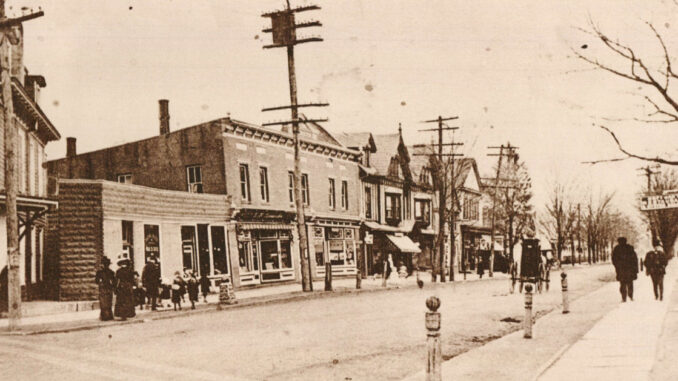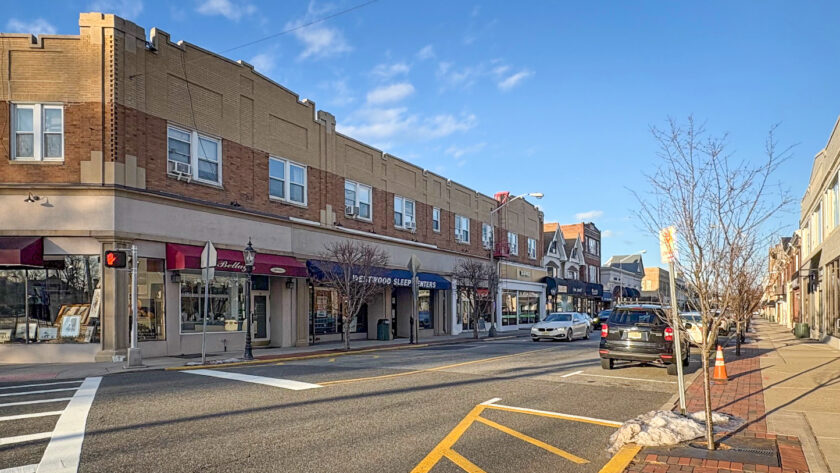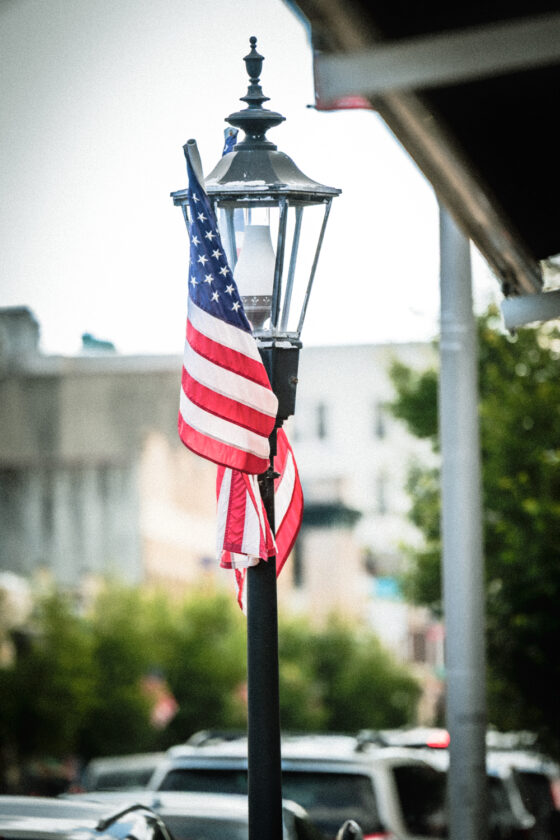
WESTWOOD—Which view do you prefer? This week we go back about 120 years with a look at the entrance to Westwood Avenue as captured from Broadway. Of course, residents of the early 1900s knew the latter as Railroad Avenue, as it ran alongside the train tracks, and both streets were more likely to see traffic from horse-drawn wagons than the newfangled horseless carriages (automobiles) that had just begun to appear. Along the street you can see the wooden hitching posts that served as the parking spots of the era. These were for tying up horses while visiting local businesses. There were no traffic lights in town yet.
The selection of businesses back then was nothing like it is today. The first store, built in 1869, had been the Van Emburgh & Bogert general store at Westwood Avenue and Broadway. In the early 1900s it was still standing and offering groceries, household and farming supplies, hay, coal, animal feed, and clothing such as boots, shoes, and hats. This store would have been at our photographer’s back while capturing his early view up the avenue. (In recreating the same angle today, this writer stood outside the bank building, which replaced the old general store in 1932.)
With the general store leading the charge, the business district gradually spread in the direction of Kinderkamack Road during the first decades of the 20th century. By the early 1900s it had extended about as far as Center Avenue, but beyond that point it was residential. There were once some beautiful Victorian homes on the avenue, later to be replaced by commercial structures.
The buildings shown here represent the earliest commercial section of Westwood Avenue. At far left, we can just see a sliver of the Westwood House Hotel, built in 1870. Next door, the single-story building was John Haring’s real estate and insurance office. On the other side, the two-story building behind the telephone pole was shared between two different businesses. The storefront on the left was E.P. Voorhis’ grocery–“dealers in dry goods, notions, millinery, ladies’ and gents’ furnishings, choice groceries, teas, coffees, and spices.” The storefront on the right was Westervelt’s Ice Cream Emporium, where, in addition to a variety of sweets, one could purchase sodas, cigars, stationery, baseballs and bats, fruits, nuts, and oysters in season. These were all replaced by the Art Deco-style Tassini Building, built in 1935, which wraps around the corner from Broadway to Westwood Avenue.
The next building down the line, the one with the gabled roofs, is the only one that remains standing. Built in the 1870s, this was Thomas E. Brickell’s Meat and Vegetable Market. In the 1910s, it had a fruit dealer, stationery store, and a barber.


